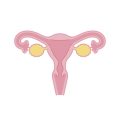Overview of Electrolysis in Modern Hair Removal
Electrolysis stands as one of the most established hair removal solutions available in the United States, with a rich history dating back to the late 1800s. Originally developed to address ingrown eyelashes, electrolysis has evolved into a gold standard for permanent hair removal across various skin and hair types. This method uses controlled electrical currents to destroy hair follicles, preventing future growth. Today, electrolysis remains highly regarded due to its effectiveness and FDA approval as a permanent solution—qualities that have allowed it to remain relevant even as new technologies enter the beauty and wellness market.
The U.S. beauty industry is dynamic and fast-paced, with consumers seeking safe, long-lasting options for unwanted hair. Despite innovations such as laser and intense pulsed light (IPL), electrolysis maintains a loyal following for its versatility and ability to treat all complexions and hair colors. The table below highlights how electrolysis compares with other popular methods in the American market:
| Hair Removal Method | Effectiveness | Suitable Skin/Hair Types | FDA Approved for Permanent Removal | Popularity in U.S. |
|---|---|---|---|---|
| Electrolysis | Permanent | All skin/hair types | Yes | Steady/Loyal Clientele |
| Laser Hair Removal | Semi-permanent | Best on light skin/dark hair | No (permanent reduction only) | Very Popular |
| Waxing/Threading | Temporary | All skin/hair types | No | Commonly Used |
| Chemical Depilatories | Temporary | Varies by product | No | Widely Available |
This enduring relevance ensures that electrolysis continues to play a key role in both traditional beauty clinics and modern med spas across America. As the demand for personalized and inclusive services grows, electrolysis professionals are embracing innovation while upholding standards of safety and efficacy that American clients trust.
2. Recent Technological Advancements
The landscape of electrolysis hair removal is rapidly evolving, thanks in large part to cutting-edge research and development spearheaded by American innovators. Recent years have witnessed a surge in next-generation electrolysis devices that prioritize not only efficacy but also user safety and comfort. Precision engineering has become a cornerstone of these advancements, enabling practitioners to target individual hair follicles with unprecedented accuracy while minimizing discomfort and skin irritation.
Electrolysis Device Innovations
Modern devices now feature digital controls, customizable settings for different skin types, and enhanced probes that adapt to varying follicle depths. Many systems incorporate real-time feedback mechanisms, allowing technicians to monitor energy delivery and adjust parameters instantaneously. These improvements ensure effective treatment outcomes while reducing the risk of side effects.
User Comfort Improvements
One of the most notable developments is the integration of advanced cooling technologies and ergonomic device designs that cater specifically to the American clientele’s expectations for comfort during procedures. Below is a comparison table outlining key advancements:
| Feature | Traditional Electrolysis | Modern U.S.-Engineered Electrolysis |
|---|---|---|
| Energy Delivery | Manual Adjustment | Automated & Real-Time Feedback |
| User Comfort | Minimal Cooling, Standard Probes | Integrated Cooling, Ergonomic Probes |
| Treatment Customization | Basic Settings | Skin Type & Follicle Adaptive Controls |
Impact on the Client Experience
Thanks to these technological leaps, Americans seeking permanent hair removal can now enjoy faster sessions, more predictable results, and greater overall satisfaction. The synergy between high-precision engineering and user-focused design sets a new standard for electrolysis treatments across the United States.

Enhanced Safety and Effectiveness
As electrolysis continues to evolve, the emphasis on safety and effectiveness has never been greater. Recent advancements in hair removal technology are not just about improved results—they are also focused on ensuring that treatments are safer for a diverse range of skin types and user needs. Both clinical providers and at-home device manufacturers are prioritizing FDA approvals, rigorous testing, and innovative protocols to minimize risks while maximizing efficacy.
Updated Safety Protocols
Modern electrolysis devices now incorporate real-time skin monitoring, automated shut-off features, and advanced energy modulation to adapt treatments according to individual skin responses. Clinics adhere to strict sterilization procedures and operator certification requirements, reducing the risk of infection or adverse reactions. For at-home users, many devices feature built-in sensors and guided tutorials, making professional-level safety accessible from the comfort of home.
FDA Approvals: Raising the Standard
The U.S. Food and Drug Administration (FDA) plays a pivotal role in regulating electrolysis technologies. FDA approval ensures that devices meet stringent criteria for both safety and effectiveness before reaching consumers. This fosters greater public trust and encourages innovation among manufacturers striving to exceed regulatory benchmarks.
| Aspect | Clinical Electrolysis | At-Home Devices |
|---|---|---|
| Safety Features | Sterile probes, licensed practitioners, advanced cooling systems | Skin contact sensors, energy adjustment algorithms, auto shut-off |
| FDA Status | Strictly regulated, frequent audits | Must obtain clearance for over-the-counter sale |
| User Guidance | Professional consultation and aftercare protocols | Interactive tutorials, mobile app support |
Advancements in Efficacy & Risk Reduction
The latest generation of electrolysis equipment utilizes precision micro-currents and customizable treatment settings tailored to individual hair types and skin tones. Digital interfaces allow practitioners to monitor progress in real time, optimizing results while preventing overtreatment or discomfort. For at-home users, new devices offer pre-set treatment modes based on clinical data, guiding safe usage with minimal guesswork.
Minimizing Risks in All Settings
Whether in a medical spa or a living room, the focus is on minimizing side effects such as scarring, pigmentation changes, or pain. Enhanced cooling mechanisms, hypoallergenic materials for probes, and aftercare recommendations have all contributed to a significant drop in complication rates. These improvements empower users across the U.S. to pursue long-term hair removal solutions with confidence.
Integration With Digital Health and Smart Devices
As electrolysis technology evolves, its integration with digital health platforms and smart devices is rapidly transforming the hair removal experience in the United States. Modern consumers expect not only effective results but also a personalized, tech-savvy approach to beauty treatments. Today, leading clinics and practitioners are leveraging mobile apps, data analytics, and connected devices to tailor electrolysis sessions for each client, providing more accurate results and enhanced satisfaction.
Personalized Treatment Plans Through Data Analytics
One of the most exciting developments is the use of data analytics to create customized treatment plans. By collecting real-time data on skin type, hair growth cycles, sensitivity levels, and session outcomes, professionals can fine-tune each session for maximum efficacy. This data-driven approach helps minimize discomfort and optimizes results over time.
Key Benefits of Data-Driven Electrolysis
| Feature | Benefit |
|---|---|
| Real-time Monitoring | Tracks progress and quickly adjusts settings for better outcomes |
| Personalized Protocols | Treatments are tailored to individual skin and hair profiles |
| Predictive Analytics | Anticipates hair regrowth patterns for proactive care planning |
Smart Devices Enhance At-Home and In-Clinic Experiences
The integration of wearable sensors and smart devices brings a new level of engagement. Clients can now use mobile apps linked to their treatment history, set reminders for follow-up appointments, or track healing progress post-session. Some clinics offer smart mirrors or skin scanners that provide instant feedback before and after each procedure, helping users visualize their journey toward smoother skin.
Popular Smart Technologies in Electrolysis
- App-based progress trackers with before-and-after photo storage
- Wearable patches monitoring skin recovery post-treatment
- Cloud-connected appointment scheduling and reminder systems
This fusion of electrolysis with digital health not only streamlines communication between clients and practitioners but also supports a more informed, empowered decision-making process. As American consumers increasingly prioritize convenience, transparency, and customization in their beauty routines, the synergy between electrolysis technology and smart health tools is poised to set new standards in the industry.
5. Eco-Friendly and Sustainable Developments
As American consumers become increasingly eco-conscious, the electrolysis industry is adapting to this shift by integrating green technologies and sustainable practices into hair removal solutions. Sustainability is no longer just a buzzword; it’s a key factor influencing purchasing decisions and business operations across the beauty sector. To meet the growing demand for environmentally responsible services, electrolysis providers are embracing several innovative approaches.
Green Technologies in Electrolysis
Modern electrolysis devices are being engineered to reduce energy consumption and minimize waste. Many manufacturers now prioritize energy-efficient machines that offer reliable performance while lowering carbon footprints. Some new systems incorporate smart sensors that optimize power usage based on real-time skin contact and treatment duration, further conserving electricity.
Recyclable and Biodegradable Materials
The push for sustainability extends to the materials used during electrolysis treatments. Disposable items such as probe covers, gloves, and wipes are increasingly made from recyclable or biodegradable materials. Clinics are transitioning away from single-use plastics in favor of compostable alternatives that align with eco-friendly values.
Sustainable Practices at Leading Clinics
| Practice | Description |
|---|---|
| Energy-Efficient Equipment | Utilizing machines designed for lower electricity use and reduced emissions |
| Eco-Conscious Consumables | Switching to biodegradable wipes, gloves, and packaging materials |
| Waste Reduction Programs | Implementing recycling initiatives for all possible salon waste streams |
Meeting Consumer Expectations
American clients are not only asking about treatment effectiveness but also about environmental impact. In response, many electrolysis studios highlight their commitment to sustainability in marketing materials and consultations. Transparency regarding eco-friendly protocols is becoming a competitive advantage in attracting clients who prioritize green choices.
By prioritizing energy efficiency, recyclable supplies, and transparent communication, the electrolysis industry demonstrates its dedication to both technological innovation and environmental stewardship—meeting the expectations of today’s conscientious American consumer.
6. The Future of Professional Training and Licensing
As electrolysis technology continues to advance, the professional training and licensing landscape in the U.S. is also undergoing significant transformation. With innovations such as AI-powered devices, advanced imaging systems, and improved safety protocols becoming more commonplace, educational standards for electrologists are evolving to ensure practitioners remain up-to-date with the latest techniques and technologies.
Evolving Educational Standards
Electrology schools and training programs across the country are updating their curricula to include hands-on experience with cutting-edge equipment and digital platforms. There is an increasing emphasis on integrating knowledge about new device functionalities, laser safety, and client data management into foundational coursework. Continuing education modules are being introduced to help existing professionals upgrade their skills as the industry evolves.
State Licensing Changes
| State | Recent Changes | Impact on Practitioners |
|---|---|---|
| California | Revised curriculum requirements to include advanced technologies | Mandatory additional training hours for license renewal |
| Florida | Introduced digital continuing education courses | Easier access for remote learning and certification updates |
| Texas | Increased focus on safety protocols for new devices | Stricter exam components on tech safety compliance |
Adapting to New Technologies: Institutional Responses
Leading U.S.-based institutions are not only modernizing their facilities but also forming partnerships with technology developers to ensure students have access to the latest innovations. Some schools have launched pilot programs that pair traditional instruction with virtual reality simulations, while others offer internships at clinics utilizing state-of-the-art electrolysis equipment. These efforts aim to prepare graduates for a rapidly changing market where technological literacy is as crucial as technical skill.
The future of professional training and licensing in electrolysis will likely continue to reflect broader trends in medical aesthetics—balancing regulatory oversight with innovation, ensuring public safety, and fostering a culture of lifelong learning among practitioners.
7. Consumer Perceptions and Market Trends
As electrolysis technology evolves, consumer attitudes toward hair removal are also shifting in the United States. The modern American market is increasingly driven by values such as inclusivity and body positivity, which have redefined beauty standards and influenced preferences for hair removal services.
Changing Attitudes Toward Hair Removal
American consumers are moving away from the “one-size-fits-all” approach to personal grooming. There is a growing acceptance of natural body hair, fueled by the body positivity movement, while others still choose permanent hair removal for personal comfort or aesthetics. Electrolysis providers are responding by marketing their services as empowering choices rather than necessities, encouraging clients to make decisions that align with their identities and lifestyles.
The Role of Social Media
Social media platforms like Instagram and TikTok have played a crucial role in shaping perceptions around hair removal. Influencers openly discuss their experiences with different technologies, including electrolysis, often providing before-and-after photos and honest reviews. This transparency has helped demystify electrolysis and increased consumer trust.
Market Trends and Demographics
| Trend | Description |
|---|---|
| Diversity & Inclusivity | More clinics now highlight their ability to treat all skin tones and hair types, reflecting America’s diverse population. |
| Personalization | Treatments are tailored to individual needs, recognizing unique goals related to gender identity, medical conditions, or cultural background. |
| Body Positivity Influence | Marketing emphasizes choice rather than pressure to conform to traditional beauty ideals. |
| Tech-Savvy Consumers | Younger generations research thoroughly online and expect detailed information about efficacy and safety. |
Looking Ahead
The future of electrolysis in the U.S. will continue to be shaped by these evolving social values and market expectations. Providers who embrace inclusivity, transparent communication, and personalized care are likely to succeed in meeting the needs of today’s American consumers seeking innovative hair removal solutions.


